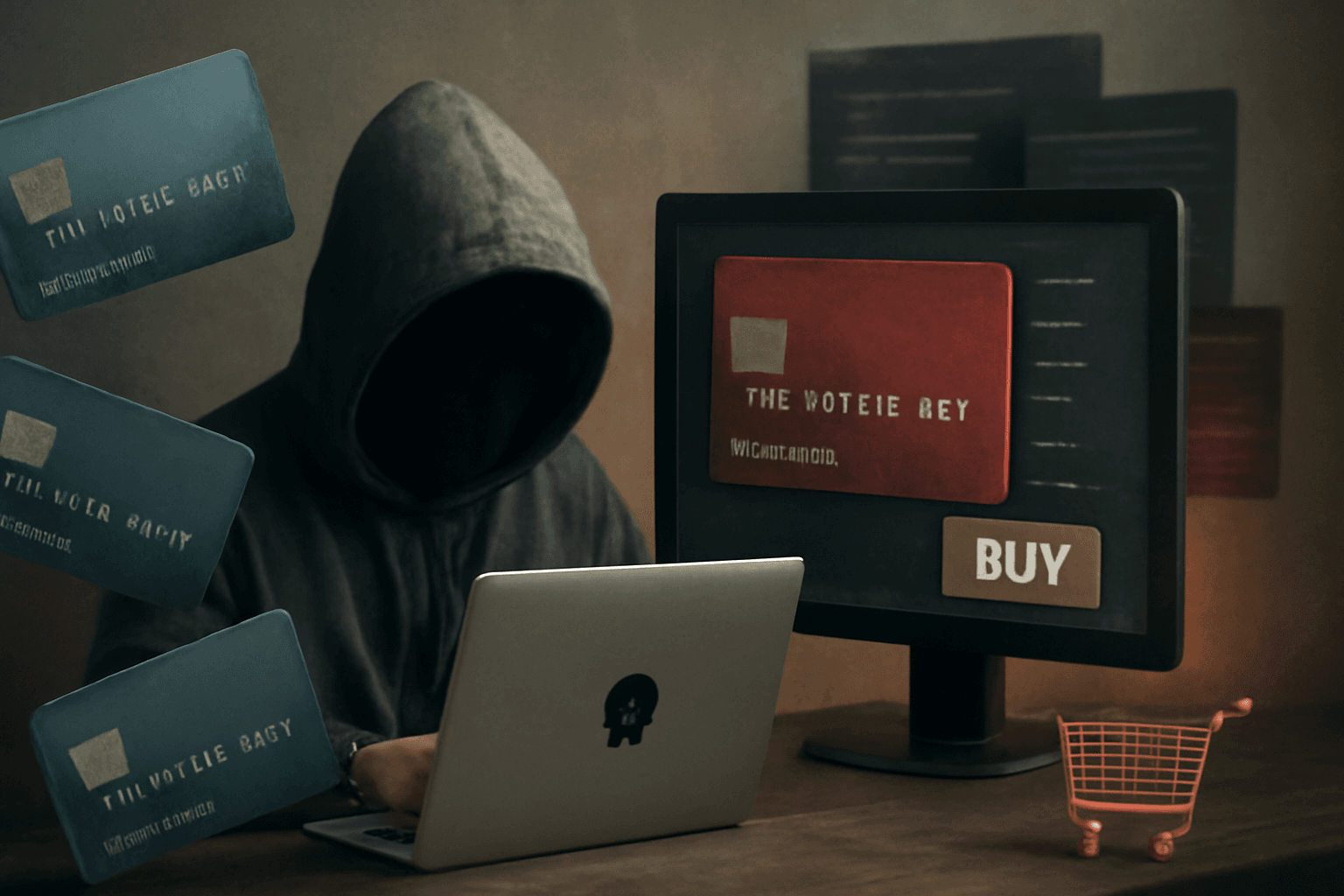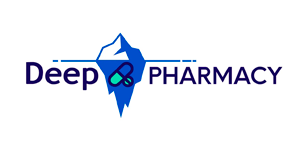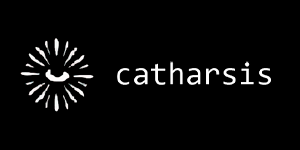Last Updated on May 14, 2025 by DarkNet
In today’s increasingly digital economy, the underground trade of stolen credit card information is thriving, fueled primarily by anonymous marketplaces on the dark web. This hidden segment of cybercrime, known as “carding,” involves criminals buying and selling stolen credit card data to carry out fraudulent transactions, ultimately costing consumers, businesses, and financial institutions billions of dollars annually. Understanding how this shadow economy operates is crucial—not only for law enforcement and cybersecurity professionals but also for everyday individuals whose personal and financial information is at risk.
In this article, you’ll gain a detailed insight into the mechanics of the dark-web carding economy. We’ll explore how credit card data is stolen, the workings of illicit marketplaces, and the processes criminals follow from acquiring data to converting it into profit. Additionally, we’ll discuss the risks users face when their financial information is compromised and provide actionable guidance on protecting yourself against becoming a victim. By shedding light on these hidden online networks, you will better understand the threats that exist in cyberspace and how proactive awareness can significantly reduce personal and collective risk.
What is Carding, and Why Does It Thrive on the Dark Web?
Carding refers to the illegal practice of using stolen credit card information to make unauthorized purchases or withdrawals. It is a form of financial fraud typically involving stolen credit or debit card numbers, expiration dates, cardholder names, billing addresses, and card verification values (CVVs). Criminals engaged in carding acquire this sensitive data through various methods, including phishing attacks, malware, skimming devices at ATMs, and hacking into databases of retailers or financial institutions.
The dark web provides an ideal environment for carding activities to flourish due to its inherent anonymity and encryption-based secrecy. Accessed through specialized software such as the Tor network, the dark web allows cybercriminals to interact anonymously, significantly reducing the risk of detection and apprehension by law enforcement agencies. Dark-web marketplaces operate similarly to legitimate e-commerce sites, complete with customer reviews, vendor ratings, and escrow services, facilitating trust among criminals and enabling widespread illegal commerce.
The financial damage from carding is enormous and continues to grow. According to a 2023 report by the Federal Trade Commission (FTC), U.S. consumers reported losing more than $8.8 billion to fraud in the previous year alone, with credit card fraud accounting for a substantial portion of these losses. Globally, financial institutions and businesses spend billions more each year attempting to prevent, detect, and recover from fraudulent transactions. Major breaches, such as those affecting large retail companies and financial institutions, often involve tens of millions of compromised credit card records, underscoring the vast scale and persistent threat posed by carding.
Understanding why carding thrives on the dark web—and recognizing the immense financial and social costs it imposes—is essential for consumers, businesses, and policymakers alike. Awareness and education are critical first steps toward reducing vulnerability to these sophisticated and pervasive forms of cybercrime.
How are Credit Card Data Stolen?
Criminals use a variety of sophisticated and increasingly subtle methods to steal credit card information. Understanding these tactics can help individuals and businesses better protect themselves and their customers. Here are some of the most common techniques:
1. Phishing
Phishing involves tricking individuals into voluntarily providing sensitive information by masquerading as a trusted entity—such as a bank, popular online retailer, or government agency. Criminals typically use emails, text messages, or phone calls designed to appear legitimate, urging victims to update their account details, confirm personal information, or reset passwords. For instance, a widespread phishing campaign in 2022 impersonated PayPal and directed recipients to fraudulent websites resembling PayPal’s login page, successfully harvesting thousands of credit card details.
2. Malware and Spyware
Malware—malicious software—infects a user’s computer, phone, or device to secretly record keystrokes, steal stored information, or redirect online transactions. A common form of malware known as a “keylogger” captures every keystroke, including credit card numbers and passwords entered during online transactions. In 2021, the infamous Magecart attacks infected the checkout pages of multiple e-commerce websites, capturing credit card data from unsuspecting customers at the point of purchase.
3. Skimming Devices
Skimming involves attaching hidden devices to card readers, such as ATMs or gas station pumps, to capture card data directly from the magnetic stripe as customers perform legitimate transactions. Skimmers may also incorporate hidden cameras or fake keypads to record PIN numbers. In 2022, federal authorities uncovered a major skimming ring that installed covert devices on gas station pumps throughout the Southeastern United States, compromising thousands of cards before detection.
4. Hacking Online Stores and Databases
Cybercriminals frequently target online retailers and business databases to directly access large amounts of stored credit card data. Hackers exploit vulnerabilities in software, website plugins, or weak cybersecurity measures. One of the most notorious cases was the 2019 Capital One data breach, where a single hacker exploited a misconfigured firewall to access approximately 100 million customer records, including credit card applications and payment data.
5. Data Leaks from Banks and Payment Systems
Even highly secure financial institutions and payment processors are vulnerable to data breaches. Criminal groups often target these entities because of the volume and quality of available data. For example, the 2021 data breach of Experian, a major credit bureau, exposed sensitive personal and financial information of tens of millions of customers, underscoring the persistent threat of large-scale leaks.
By understanding these prevalent methods of credit card theft, individuals can proactively identify risks, enhance their security practices, and significantly reduce the likelihood of becoming victims of fraud.
How Dark-Web Marketplaces for Stolen Credit Cards Operate
Dark-web marketplaces dedicated to trading stolen credit card data function similarly to legitimate online retail sites but operate entirely within hidden networks accessible through anonymizing technologies, such as the Tor browser. These marketplaces are structured to maintain anonymity, security, and efficiency, providing criminals a convenient platform to purchase and sell illicitly obtained financial data without direct contact or significant risk of exposure.
Overview of Prominent Dark-Web Marketplaces
Several notorious dark-web marketplaces have emerged as dominant platforms for selling stolen credit card data. Among the most infamous was Joker’s Stash, one of the largest carding marketplaces, active from 2014 until its closure in early 2021. Joker’s Stash gained notoriety due to its massive inventory of millions of stolen cards, advanced security measures, and sophisticated user interface.
Another notable marketplace is BriansClub, still operational as of early 2024, known for consistently stocking fresh card data obtained through large-scale data breaches and skimming operations. Platforms like BriansClub periodically experience law enforcement disruptions yet often re-emerge or adapt under new identities.
Types of Credit Card Data Sold on Dark-Web Marketplaces
Dark-web marketplaces typically categorize stolen credit card data into distinct types based on the completeness and usability of the information:
- CVV Data: This includes the cardholder’s name, card number, expiration date, billing address, and the card verification value (CVV). CVV data is primarily used for online fraudulent purchases and tends to be the most common form of stolen card data sold.
- Dumps: Dumps are sets of data copied directly from the magnetic strip of physical credit cards, typically obtained through skimming devices. Dumps often include cardholder names, card numbers, and expiration dates but usually lack CVVs. Criminals use these dumps to create counterfeit cards for in-person transactions or ATM withdrawals.
- Fullz: This comprehensive dataset contains complete financial and personal information, including name, Social Security number, birth date, billing addresses, bank account details, and other sensitive data. Criminals leverage fullz not only for financial fraud but also for identity theft and more sophisticated scams.
Pricing Structures for Stolen Credit Cards
The price of stolen credit card data on dark-web marketplaces varies significantly, depending on several factors:
- Type and Completeness of Data:
- CVV data typically costs between $5 and $25 per record, depending on the issuing bank and country.
- Dumps are more expensive, usually ranging from $50 to $150 per record due to their utility in creating physical counterfeit cards.
- Fullz are the most costly, priced anywhere from $30 to several hundred dollars, depending on credit limits, the victim’s credit score, and additional data included.
- Country and Bank of Origin: Cards from affluent countries, especially the United States, Canada, the UK, and Western Europe, command premium prices due to higher potential returns. Cards issued by prestigious or high-limit banks also attract higher prices.
- Freshness of Data: Recently acquired or “fresh” card data that has not yet been widely distributed or flagged by banks is more valuable. Prices decrease as the data becomes older or if marketplaces become saturated with similar information.
Understanding the operations, inventory structure, and pricing dynamics of these dark-web marketplaces can help financial institutions, cybersecurity professionals, and consumers better appreciate the magnitude of threats posed by carding schemes—and inform more effective preventive measures.
The Typical Process of Purchasing Stolen Credit Cards on the Dark Web
Purchasing stolen credit cards on the dark web follows a structured yet discreet procedure designed to protect both buyers’ and sellers’ identities. Criminals rely on secure anonymity tools and cryptocurrencies to reduce risks associated with online financial fraud. Here’s a detailed, step-by-step breakdown of the typical buying process:
1. Accessing the Dark Web
To begin, potential buyers must first gain access to the dark web. This typically involves using specialized anonymity software such as Tor (The Onion Router), which encrypts and routes internet traffic through multiple servers to hide the user’s location and identity. Once on the dark web, users navigate to illicit marketplaces through hidden “.onion” websites, accessible exclusively via Tor browsers.
2. Marketplace Registration and Security
Buyers must create anonymous accounts on their chosen marketplace. Registration generally involves minimal personal information to maintain anonymity. Often, users create unique usernames and passwords, sometimes reinforced with encryption keys or PGP (Pretty Good Privacy) keys for secure communication. High-profile markets might also require verification steps to prevent law enforcement infiltration, such as referrals from established users.
3. Selecting Credit Card Data
Once registered, buyers browse the marketplace listings, filtering available data by criteria such as card type (Visa, Mastercard, American Express), country of issue, bank, credit limit, cardholder location, or data freshness. Listings typically include key details such as partial card numbers, expiration dates, issuing banks, and card types, allowing buyers to select the exact card profiles suited to their fraudulent goals.
4. Checking Card Quality (Card Checkers)
Before making a purchase, experienced buyers often validate the authenticity and usability of the offered credit card data using online tools known as card checkers. Card checkers quickly verify whether a card remains active, ensuring it hasn’t already been blocked by banks or previously flagged for suspicious activity. This step helps buyers minimize risks of buying unusable or expired data.
5. Completing the Transaction
After selecting and validating the desired card information, buyers initiate the payment transaction. Payment on dark-web marketplaces typically involves cryptocurrencies—most commonly Bitcoin (BTC) or Monero (XMR)—because these digital currencies offer a high degree of privacy and are harder for authorities to trace compared to traditional payment methods.
Marketplaces frequently employ an escrow system, temporarily holding cryptocurrency payments until buyers confirm that the purchased credit card data is valid and functional. Once confirmed, funds are released to the seller.
6. Delivery and Usage of Purchased Data
Immediately upon completing the transaction, buyers receive access to the purchased data. This information is usually delivered electronically within the marketplace, either displayed directly or provided as encrypted files accessible via secure downloads. From here, buyers proceed to utilize this stolen information to commit fraud—typically by making unauthorized online purchases, creating counterfeit physical credit cards, or initiating financial transfers.
7. Covering Tracks and Security Precautions
Experienced card buyers take additional steps to mask their online activity and financial transactions, using tools such as Virtual Private Networks (VPNs), anonymous email services, and cryptocurrency mixers (“tumblers”) to obfuscate money trails and IP addresses, significantly reducing chances of detection by financial institutions and law enforcement agencies.
By understanding this intricate, highly secretive process, individuals and financial institutions can more effectively recognize vulnerabilities and improve defensive measures to safeguard sensitive financial information against exploitation in the underground economy.
The Carding Chain: From Card Purchase to Cashing Out
The criminal practice of carding doesn’t end with the acquisition of stolen credit card data—it’s only the first link in an elaborate chain designed to convert stolen financial information into tangible profits. Understanding each step in this illicit supply chain reveals how criminals monetize stolen cards and the sophisticated infrastructure supporting these operations.
Step 1: Obtaining the Stolen Credit Card Data
As described previously, the initial stage involves purchasing stolen credit card details from dark-web marketplaces. Buyers—often called “carders”—carefully select cards based on criteria such as credit limits, cardholder locations, and issuing banks to maximize potential financial returns.
Step 2: Utilizing Stolen Cards for Online Purchases
Once in possession of valid card data, carders quickly use it to make fraudulent purchases online. To avoid immediate detection, they typically select websites with minimal security checks or ones offering quick, anonymous shipping. Common targets include online marketplaces, luxury retailers, electronics stores, and digital services.
Step 3: The Role of “Drops” and Intermediaries
To avoid direct association with fraudulent activities, carders employ “drops”—individuals who receive illegally purchased goods on their behalf. Drops may be willing accomplices recruited online or unwitting individuals tricked into acting as recipients through fraudulent job postings or online scams. Once drops receive the items, they forward the goods to the criminals or reship them to another intermediary, further distancing the original perpetrators from direct involvement.
Step 4: Monetizing Fraudulently Purchased Goods
Criminals convert these illegally acquired items into cash through various monetization strategies:
- Reselling High-Value Electronics: Products such as smartphones, laptops, and gaming consoles purchased with stolen cards are quickly resold at discounted prices on secondary markets, auction sites, or social media platforms. This quick turnover helps criminals rapidly convert stolen goods into untraceable cash.
- Gift Cards and Prepaid Cards: Criminals often purchase digital gift cards or prepaid debit cards with stolen credit card data. These cards can be quickly resold online at a fraction of face value on specialized platforms or peer-to-peer marketplaces, generating immediate cash flow with relatively low detection risk.
- Cryptocurrency Conversion: Increasingly, stolen cards are used to purchase cryptocurrencies like Bitcoin, Ethereum, or Monero. Criminals favor cryptocurrency due to its ease of transfer, relative anonymity, and the difficulty financial institutions face in tracing or reversing these transactions. Once acquired, cryptocurrencies are rapidly laundered through crypto mixers, making funds nearly impossible to trace.
Step 5: Cashing Out
Finally, criminals “cash out,” converting assets like resold electronics, gift cards, or cryptocurrencies into cash. Methods include withdrawing cryptocurrency via exchanges or Bitcoin ATMs, transferring funds through money-mule bank accounts, or receiving payment through online payment systems (such as PayPal or peer-to-peer platforms). This final stage completes the monetization cycle, allowing criminals to realize profits from stolen card information.
The entire carding chain relies heavily on collaboration among specialized roles—carders who buy and use card data, drops who receive stolen merchandise, and intermediaries who resell goods or manage cash-out logistics. Disrupting any step in this chain can significantly hamper criminal profitability, highlighting why comprehensive prevention and investigative strategies are essential for financial institutions and law enforcement agencies alike.
How Banks and Financial Institutions Detect and Prevent Carding
Financial institutions and banks dedicate significant resources to combat credit card fraud, investing heavily in advanced monitoring systems, artificial intelligence, and customer education programs. Understanding the various techniques and technologies these institutions deploy can clarify how they effectively detect and prevent carding activities.
1. Fraud Monitoring Systems
Banks use sophisticated fraud monitoring systems to continuously oversee credit card transactions. These systems analyze millions of daily transactions, rapidly identifying irregular spending patterns, unusual transaction locations, or unusually high-value purchases. For instance, if a cardholder typically uses their credit card in New York City but suddenly makes a large purchase in Eastern Europe, the system automatically flags the transaction for further review.
Examples of widely used fraud monitoring systems include:
- Falcon Fraud Manager by FICO, which analyzes transaction patterns and flags suspicious activity in real-time.
- Visa Advanced Authorization, which assesses the risk of transactions by evaluating factors such as location, merchant type, and historical spending behavior.
2. AI-Based Detection Methods
Artificial intelligence (AI) has become indispensable in the fight against carding. AI systems use machine learning algorithms to detect subtle patterns and anomalies that might indicate fraud, including transactions at unusual times, repeated small transactions (a common sign of testing stolen cards), or multiple purchases from suspiciously similar merchant accounts.
AI platforms such as IBM Safer Payments and Feedzai leverage advanced analytics, machine learning, and predictive modeling to identify fraudulent transactions before they are completed. These technologies continuously improve their detection accuracy by learning from new fraud cases and consumer behavior patterns.
3. Transaction Alerts and Cardholder Notifications
Financial institutions actively involve customers in fraud prevention through real-time transaction alerts sent via SMS, email, or banking apps. These alerts allow cardholders to immediately verify transactions or report unauthorized activity, significantly reducing potential financial losses.
For example, major banks such as Chase, Bank of America, and Wells Fargo routinely offer customizable transaction alert services. Customers can set up notifications for specific spending thresholds, international transactions, or card-not-present (online) transactions, enabling prompt detection of unauthorized activity.
4. EMV (Chip-and-PIN) Technology
The widespread adoption of EMV chip technology—embedded microchips in credit cards—has substantially reduced fraud related to counterfeit physical cards. Unlike traditional magnetic strips, EMV chips generate unique transaction codes for every purchase, making card duplication exceedingly difficult. While this doesn’t eliminate all types of card fraud (such as online transactions), it significantly hampers criminals’ ability to use physically cloned cards in brick-and-mortar stores.
5. Multi-Factor Authentication (MFA) and 3D Secure
Banks encourage merchants and customers to use Multi-Factor Authentication (MFA) and systems like 3D Secure (Verified by Visa, Mastercard SecureCode) for online transactions. These security measures require cardholders to authenticate purchases using additional verification methods, such as one-time passwords sent via SMS or biometric identification like fingerprint scanning or facial recognition, thus making it far harder for criminals to misuse stolen credit card data online.
By combining real-time transaction monitoring, artificial intelligence, customer alerts, chip-based technology, and multi-factor authentication, banks and financial institutions form a robust defensive layer against carding. These proactive and preventive measures significantly limit the financial damage and help protect customers from the pervasive threat of credit card fraud.
Real-world Cases and Notable Carding Busts
Law enforcement agencies worldwide, including the FBI and Europol, continuously investigate and dismantle major carding operations. High-profile cases highlight both the scale of carding activities and the serious legal consequences faced by those involved.
Joker’s Stash Takedown (2021)
One of the most notable dark-web marketplace shutdowns involved Joker’s Stash, previously the largest marketplace for stolen credit cards. In January 2021, after a sustained international law enforcement campaign led by the FBI and supported by Interpol, Joker’s Stash closed operations permanently. Prior to its closure, Joker’s Stash hosted over 40 million stolen credit card records and generated hundreds of millions of dollars in illicit revenue. Although the anonymous administrator behind the marketplace was never publicly identified or arrested, authorities seized multiple servers and cryptocurrency wallets, significantly disrupting global carding networks.
Operation Card Shop (2018)
In 2018, the FBI successfully concluded Operation Card Shop, targeting the notorious carding forums Infraud Organization and Cardplanet. Infraud Organization alone was responsible for losses exceeding $530 million globally. Following extensive undercover operations and coordinated international raids, 36 individuals across several countries were indicted, resulting in numerous arrests. Key figures received severe penalties; for instance, Sergey Medvedev, a top administrator, received a 10-year prison sentence in the United States for his central role in the operation.
BriansClub Data Seizure (2019)
Another major blow to dark-web carding activities was the 2019 data seizure from BriansClub, a popular dark-web marketplace specializing in stolen card information. This incident involved security researchers and law enforcement agencies cooperating to breach the marketplace’s servers, exposing approximately 26 million stolen credit card records valued at nearly $414 million. While this breach didn’t immediately result in arrests, the seizure significantly compromised the operation’s profitability and credibility, prompting criminal users to migrate elsewhere.
Europol’s Operation Neptune (2020)
In a notable European effort, Europol spearheaded Operation Neptune in 2020, dismantling a major network specializing in carding and online fraud. The operation targeted criminals across multiple European countries, ultimately leading to 95 arrests and seizure of assets worth over €2 million. Europol’s action dismantled the infrastructure supporting numerous carding operations, drastically reducing illicit activity in the region.
These high-profile cases illustrate the relentless effort by global law enforcement agencies to disrupt the dark-web carding economy. They also underscore the serious consequences faced by criminals—from lengthy prison sentences to substantial financial penalties. Continued international cooperation remains crucial in combating this persistent cybercrime threat.
Consequences for Users Who Purchase and Use Stolen Credit Cards
Purchasing and using stolen credit cards is treated as a serious criminal offense with substantial legal consequences, both in the United States and across the European Union. Individuals caught engaging in carding activities commonly face charges including identity theft, fraud, conspiracy, and computer-related crimes.
In the United States, these offenses typically carry severe penalties. Federal convictions for credit card fraud can result in fines of up to $250,000 and prison sentences ranging from several months to over 20 years, depending on the scale and severity of the crime. State-level charges can add further penalties. For example, in 2022, an Ohio man was sentenced to 10 years in federal prison for his role in a carding scheme involving over $1 million in fraudulent transactions.
Within the European Union, similar stringent measures apply. Convicted individuals often face imprisonment ranging from one to ten years, alongside significant monetary fines and confiscation of illegal gains. For instance, in Germany, a 2021 investigation led to the conviction of a man who purchased stolen credit cards on the dark web, resulting in a six-year prison sentence and substantial fines.
Beyond these criminal penalties, individuals convicted of carding face lasting personal consequences, including damaged credit scores, restricted access to financial services, and permanent criminal records that affect employment opportunities.
These examples underscore a critical reality: purchasing and using stolen credit cards is not only unethical but carries heavy legal risks that can significantly disrupt an individual’s life.
Protecting Yourself from Credit Card Data Theft
Safeguarding your credit card data from theft involves proactive measures and timely responses. By following clear, practical guidelines, you can significantly reduce the risk of becoming a victim of carding or related fraud.
Step-by-Step Recommendations:
1. Enable Two-Factor Authentication (2FA)
Activate two-factor authentication on all financial accounts and shopping websites. This ensures that even if your password is compromised, criminals cannot easily access your accounts without an additional verification code or biometric check.
2. Use Virtual Credit Cards
Many banks now offer virtual credit cards—temporary digital card numbers linked to your primary account. Use virtual cards for online shopping, as these numbers are single-use or short-term, limiting potential exposure if compromised.
3. Shop Securely and Avoid Phishing Scams
- Always verify websites before entering your credit card details. Ensure the URL begins with “https://” and displays a secure padlock icon.
- Never respond to emails, calls, or texts asking for sensitive financial details. Legitimate banks and businesses never request sensitive information through unsolicited communications.
4. Regularly Monitor Your Accounts
Check your bank and credit card statements frequently—at least weekly—for unfamiliar transactions, even small ones, as criminals often test stolen cards with minor charges.
5. Recognize Signs of Credit Card Compromise
Be vigilant about signs your card details may have been compromised, including:
- Unexpected small transactions from unknown merchants.
- Unauthorized overseas purchases.
- Sudden declines or blocks when attempting legitimate transactions.
6. Use Contactless or Chip Cards
Whenever possible, use credit cards equipped with EMV (chip-and-PIN) or contactless payment options, as these technologies significantly reduce the risk of card data theft through skimming.
7. Immediate Steps if Your Card Data Is Stolen
If you suspect your credit card information is compromised:
- Contact your bank immediately: Ask to freeze or cancel your card to prevent further unauthorized use.
- Report fraudulent transactions: Clearly identify unauthorized charges so the bank can investigate and potentially reimburse you.
- Place a fraud alert: Notify credit reporting agencies (Equifax, Experian, TransUnion) to place a fraud alert or freeze on your credit report, preventing criminals from opening new accounts in your name.
- Change account passwords: Update passwords across your financial accounts promptly to enhance security.
Implementing these proactive strategies can greatly reduce the likelihood of credit card fraud, keeping your finances and personal information secure.
Future of Carding and Efforts to Combat It
As technology continues to evolve, so too will the methods criminals use to exploit credit card data, prompting an ongoing arms race between fraudsters and cybersecurity experts. The future landscape of carding will undoubtedly see significant shifts driven by emerging technologies, evolving criminal strategies, and proactive legislative efforts.
Emerging Technologies Shaping Carding
Artificial intelligence (AI) and machine learning will increasingly influence both sides of the carding battle. While financial institutions use advanced AI systems to detect and prevent fraud, criminals are simultaneously harnessing similar technologies to bypass security measures. Cybercriminals are likely to adopt AI-driven bots that rapidly test stolen card data, create sophisticated phishing attacks, and evade detection algorithms by mimicking legitimate user behavior.
Biometric authentication methods, such as facial recognition, fingerprint scanning, and voice identification, are expected to become standard in payment security. These technologies can significantly reduce fraud by providing an extra layer of verification beyond traditional PINs and passwords. However, criminals may adapt by finding ways to spoof or replicate biometric data, creating an entirely new category of fraud risks.
Criminal Adaptation and New Risks
As security improves, cybercriminals will adapt by focusing more heavily on alternative tactics, including identity theft, account takeover (ATO) fraud, and social engineering attacks. Fraudsters are already targeting online accounts and digital wallets due to the increasing complexity and cost associated with physical credit card fraud. Cryptocurrencies and digital payment platforms, offering anonymity and speed, are also likely to become more prominent targets in carding schemes.
Additionally, the proliferation of Internet of Things (IoT) devices, many with weaker security protocols, presents new opportunities for card data theft. Criminals may exploit connected devices—such as smart appliances or home assistants—to capture personal and financial data, potentially bypassing traditional security safeguards.
Legislative and Regulatory Developments
Governments and regulatory bodies will continue to tighten security requirements and compliance standards, compelling financial institutions to adopt more robust fraud prevention frameworks. Stricter regulations surrounding data privacy, customer authentication, and incident reporting are likely, particularly in regions like the United States and the European Union. Increased international cooperation between law enforcement agencies will become essential, targeting global criminal networks through coordinated actions and intelligence sharing.
Moreover, lawmakers may impose higher penalties and broader liability frameworks for companies failing to protect customer data adequately, further incentivizing organizations to invest heavily in cybersecurity infrastructure and fraud prevention measures.
Collaborative Efforts and Education
Ultimately, successful future defense against carding will require collaborative efforts among financial institutions, technology providers, law enforcement agencies, and consumers. Public awareness campaigns emphasizing digital literacy, secure online behaviors, and recognizing emerging threats will play a crucial role in reducing vulnerability.
The ongoing evolution of cybercrime underscores the importance of constant vigilance, adaptability, and proactive investment in emerging security technologies and practices. Staying ahead of carding threats will depend heavily on innovation, cooperation, and a clear-eyed understanding of evolving criminal methods.
Conclusion: Staying Informed and Protecting Your Finances
Credit card fraud and the dark-web carding economy represent persistent and evolving threats in our increasingly digital world. Understanding how stolen credit cards are obtained, traded, and monetized is critical to safeguarding your personal and financial well-being. As detailed in this article, criminals employ sophisticated techniques—from phishing attacks and skimming to dark-web marketplaces and advanced cyber tools—to exploit vulnerabilities and commit fraud.
However, by staying informed and adopting proactive security practices, you can significantly mitigate these risks. Financial literacy, regular account monitoring, secure online behaviors, and utilizing advanced protection methods such as two-factor authentication and virtual cards are essential strategies. Moreover, being alert to signs of card compromise and knowing how to respond swiftly if your data is stolen can drastically limit potential damage.
Ultimately, the strongest defense against credit card fraud involves ongoing vigilance, education, and collaboration among consumers, financial institutions, technology companies, and law enforcement agencies. By remaining proactive and informed, you can better protect your financial assets, identity, and peace of mind in an era of increasingly sophisticated cyber threats.













